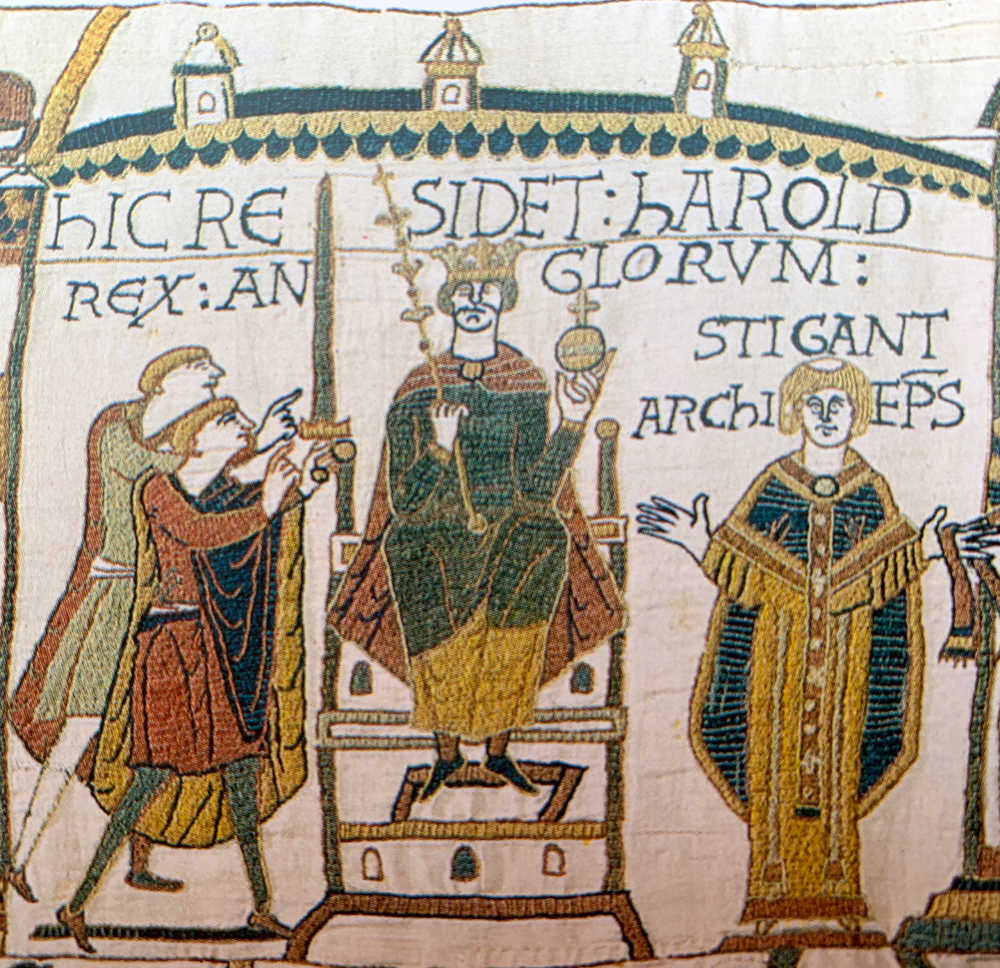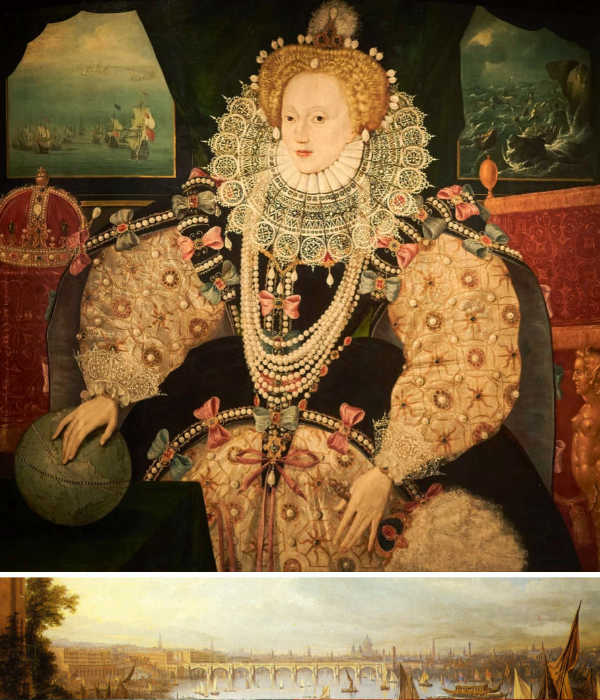Harold Godwinseson
The man who was king
Born c.1022, England | Died 1066, Hastings, England
Earl of East Anglia, Earl of Wessex, dux Anglorum, subregulus, King of the English. Made himself indispensable, chose his kingdom over his brother, defeated Christendom's greatest warrior, and came within an evening of greatness. Became a legend all the same.

Edward the Confessor had named Harold Godwineson, the earl of Wessex who by then held the reigns of the English government, as his successor on his deathbed in the dawning days of 1066.
The childless Edward had also promised the throne to both duke William of Normandy and the Dane Swein Estrithson. This was to cause problems. A deathbed request, though, was as good as it needed to be for Harold and he was crowned king the next day, just hours after Edward’s funeral.
So what did the English think? Did Harold steal the crown from under them? Could they have done better? Might they have been quite pleased to see William after all?
Harold had come a long way fast. He was earl of East Anglia by 1044 when he was in his mid-twenties at most. This may have been predictable enough for a son of one of the three great earls of Wessex, Mercia and Northumbria and following the path of his elder brother, Swein, had things just two years into Edward the Confessor’s reign not been a little more complicated than that.
Godwine himself had risen quickly and in some circles that is the hardest thing to live down. To make matters worse, Edward may have held Godwine at least partly responsible for the death of Edward’s brother, Alfred. As well as having to swear an oath to his innocence, Godwine’s gifts to Edward on the king’s arrival back in England were noticeably generous and had the whiff of a wergeld about them - the compensation for injury or murder that was calculated by both severity and status. So while Godwine continued to prosper, his eldest sons were earls and his daughter Edith married the king himself, history and politics can never have been far away.
Harold would have had to work at it. An earldom was not simply a nice title. The Domesday records for East Anglia are an earlier stage draft than the rest of the book and show a tremendous amount of detail that is abridged elsewhere. The English administration could take an interest down to the very last sheep and cow that was not tucked discreetly out of sight. That Harold seems to have married his first wife, Edith ‘Swanneck’, to add to his local lands and strengthen his position in the region suggests that being called ‘earl' only got you so far.
There are signs Harold might have been good at it, too. He added much of his brother’s earldom after Swein was exiled in 1047 for the abduction of the abbess of Leominster, which was as extraordinary as it sounds. This may have been a sop to Godwine to replace Swein without causing lasting damage to family wealth and influence, but it would have been an embarrassing position and Harold must have been a credible option. Swein had not helped make being a ‘Godwineson’ any more of a compliment.
Despite siding with his father during Godwine’s rebellion of 1051 and returning as part of the negotiated peace in 1052, Harold was strong enough, useful enough, or both not only to assume his father’s lands and titles on Godwine’s death the following year but also to take over Earl Ralph of Hereford’s lands and duties in 1055. Earl Ralph was one of Edward’s small Norman contingent who had flourished briefly in 1051 but Ralph’s failure against the Welsh led to his replacement. Harold had north Wales under English influence by the early 1060s, at least matching the success of the venerable Earl Siward of Northumbria against the Scots of Macbeth. By then, Harold was clearly managing the English government for an aging king who preferred to devote time to building his abbey at Westminster. This is the time when Harold’s status in the records starts to grow above the other earls and one step away from the crown.

These titles were reality more than flattery. Responsibilities, as always, came with power and they piled onto Harold’s shoulders. In 1065 Northumbria rose up against Harold’s brother Tostig, who had been made earl on Siward’s death. Despite the rebels ravaging southward and laying lasting waste to much of Northamptonshire, Harold sided with them over his family interests. He brokered a settlement which raised Siward’s younger son, Morcar, to the earldom. Tostig, adding his own mark to the reputation of a ‘Godwineson’, fled into bitter exile.
Decisions like this undoubtably lined up support for Harold ahead of the youthful Edgar Atheling, prince of the house of Wessex, and Norman or Danish potentates. He was the obvious choice for the crown when Edward died on 5 January 1066. Harold’s coronation the very next day was essentially unchallenged in England. The witan - the great and the good of the nobility - supported him, and while there was some short-lived opposition in Northumbria their new earl Morcar stayed loyal to the new king.
Indeed England swung into action for Harold. Coins were minted across the kingdom for the new king, with examples surviving from 47 mints. While only one writ from Harold’s nine month reign has made it to the present, this is not far below the average survivals from Edward’s reign. There is much to suggest the English government was very much alive and well, not least the detail in Domesday Book of landholdings ‘on the day King Edward was alive and dead’, hinting that information had been compiled near enough to that day for Domesday to look back twenty years quickly and clearly. The detailed information to raise tax revenues would have been crucial to Harold, as he put both army and navy in the field while the kingdom waited for not one but two invasions: William in the south and Harald Hardrada, who was pursuing Swein Estrithson’s claim from the north. These are the experiences that stretch the unity and ability of any kingdom. As summer wore on Harold and England were, if anything, taking them in their stride.
The Norwegian king Harald Hardrada was the bigger threat of the two. He was a warrior famous across Europe who had fought from Byzantium to the Baltic. He was also now allied with Tostig, who brought local knowledge and the potential for local support.
Yet no noble of any standing joined Tostig and Harald. Edwin and Morcar, earls of Mercia and Northumbria respectively, put an army in the field which was defeated at Fulford. Yet even after having to lose some of his standing army to the needs of the harvest and much of his navy to a storm, King Harold commanded a forced march from London to surprise, defeat and kill Harald Hardrada and Tostig and leave their army in ruins. That same army was able to appear just days later on the south coast to face the newly arrived Normans. If Edwin and Morcar did not join them, the damage of two battles is a more plausible reason than divisions in the English high command.
Harold, it seems, was an effective king. He may well have been a popular one too.
As we have seen, he was uniquely qualified and highly able. He had put kingdom before family and now he was married to the sister of Earls Edwin and Morcar of Mercia and Northumbria respectively. As king and queen, their children could have united the strands of families which had grown over the century and occasionally threatened to pull the kingdom apart. Even his detractors acknowledged Harold’s good looks, brains and charm.
Despite all of this, Harold was not born to be king, and it was the biggest of steps to take. At some point, Harold must have decided that he was the best man for the job. To some this was always on the cards, but he may have decided much later on. Maybe even when he was in Normandy in 1064. Ultimately King Edward, the witan and the kingdom agreed.
After a triumphant year in 1066 when Harold carried all before him, this may have been clear to see. But in the end, within minutes of a famous victory, he was struck down. The day was lost and an era was over. Two more of his brothers, Gyrth and Leofwine, had died at Hastings too and while nobody of any note had joined up with Harald Hardrada or William, hardly anyone was left to lead the fight for the English either.
Its worth a thought that, if William really had abducted the richest and most powerful man in England after the king in 1064, there is no evidence of any consternation on the English side until Harold himself returns and is shown getting something of a wigging from the king. There is no record of a ransom demand, money raising or armies being gathered. This record may have disappeared with the Anglo Saxon Chronicle’s entries for 1064. But it may be that the trip was all above board, at least right to the end when Harold was left with no choice but to swear an oath to support William. Might it only have been then when Harold decided that what was good for William was not also good for England?
Bibliography
- ed. Campbell, James (1991) The Anglo-Saxons. London, Penguin Books
- Walker, Ian W. (1997) Harold, The Last Anglo-Saxon King. Stroud, Sutton Publishing

